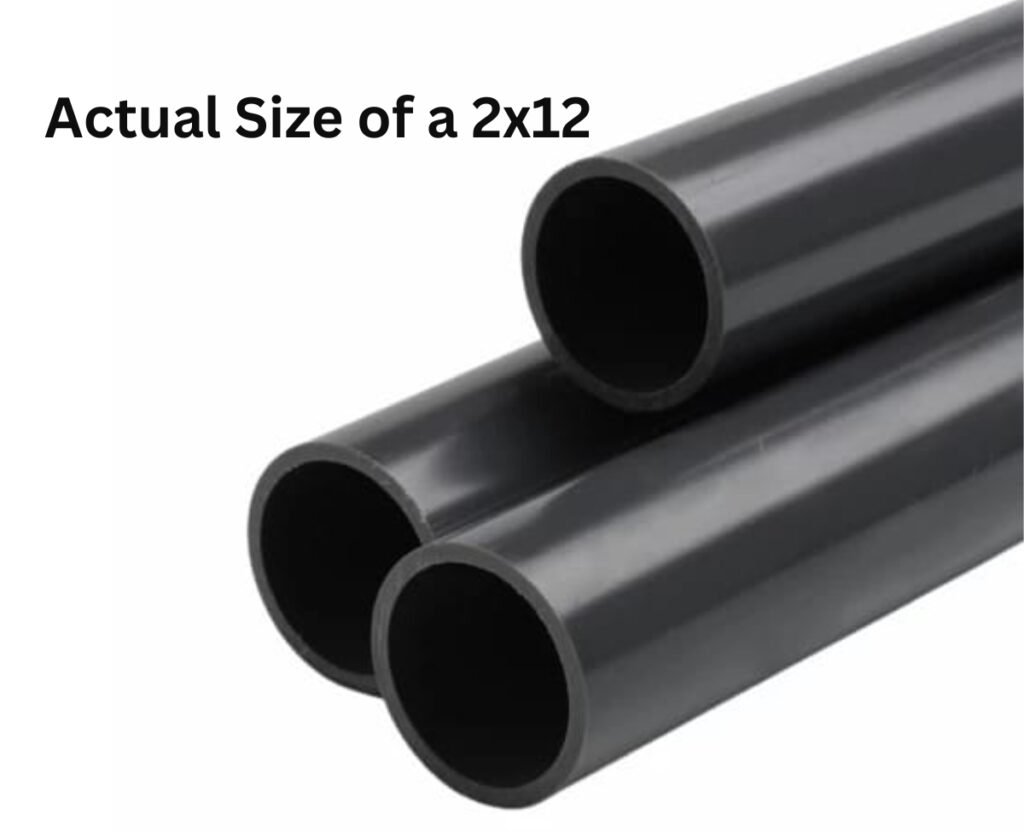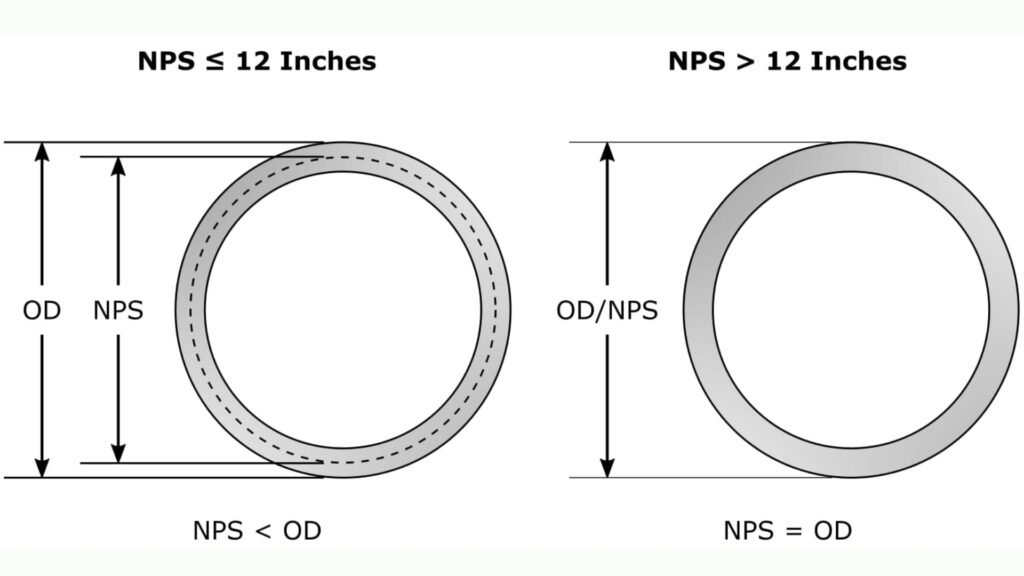You walk into a lumberyard. Your project requires 2x 12-inch boards. You find the stack. The label says 2×12. Assume the value of the board is 2 inches thick and 12 inches wide. This is a general misconception. The tree stump you have is smaller. Such inconsistency is something that confuses many. Any building project needs to know the actual measurements of lumber. It ensures accuracy. It prevents costly mistakes.
This manual will unravel lumber sizes. We shall discuss the distinction between the nominal size and the actual size. However, you are going to know why a 2×12 is not really 2 inches by 12 inches. Therefore, the fact that the wood becomes a different dimension will be discussed. Lastly, we shall discuss the effect of this on your construction work. Keeping such information is what makes you a better builder.
Nominal vs. Actual Size: The Core Concept
Sizing Lumber has its own lingo. Two major terms are nominal and actual. The first step is in understanding these terms.
What is Nominal Size?
The name of the lumber is the nominal size. It expresses the size of the board as it was cut originally out of the log. Thus, this is the rough, green lumber. One of those new boards of sawn wood, which are to be made into a 2×12, is really about 2 inches by 12 inches. Therefore, this is its nominal or name-only dimension. So, it is a plain, easy-to-remember label applied all across the industry. When asking a hardware store to supply you with a 2×12, you are using its nominal size. Thus, this naming system is easy to communicate with.
What is Actual Size?
The finished dimension of the lumber is called the actual size. The size refers to the size it acquires when wood is processed. Therefore, the nominal size of 2×12 does not match its actual size in a significant way. Thus, the finished product of a standard 2×12 board is 1.5 by 11.25. So, this is the dimension that you are to employ in your project plans. Measurement of the wood is always necessary when precision is important. The reduction in both thickness and width by a half-inch and three-quarters, respectively, is normal. This is no coincidence of reduction. It is a systemic component of the lumber production.
Why Do Lumber Dimensions Change?
The transformation of a mean log into a completed board is a process that takes a number of steps. Therefore, the lumber is cut and made smaller in two major procedures, which are drying and surfacing. Thus, these are necessary measures that should be taken to ensure that building materials are stable and of high quality.
The Drying (Seasoning) Process.
Green lumber has a high level of water content. Thus, this is moisture that renders the wood unstable. As it dries, it shrinks. Therefore, the shrinkage is uneven throughout the grain. The wood may twist, cup, or warp if not properly dried. Thus, the lumber is dried in huge kilns by Mills. Therefore, these sterilized conditions gradually draw the moisture level. This is done to reduce the number of defects and to strengthen the wood. It also causes the wood to be much lighter. When the water sinks out of the fibers of the wood, the board narrows, as well as thickens. Thus, this primary drying explains away a certain percentage of the size loss of the nominal dimension.
Surfacing (Planing) Process.
The lumber is rough even after drying. Its surfaces are uneven. It is subjected to a planer to make a smooth board that can be used. Thus, a planer is a machine that has rotating knives. It skims a thin layer of the wood on all sides. This is referred to as S4S, i.e., surfaces on four sides. However, planning makes it even and smooth-finished. This also facilitates the wood. It also makes it ready to be painted or stained. A quarter-inch is left out of the thickness and width by the planning process. This, together with the drying shrinkage, gives the final actual dimensions.
A 2×12 begins with a coarse board of approximately 2 by 12 inches. Drying shrinks it. Planning smooths it. Therefore, the resultant product is the board of 1.5 x 11.25 inches. It is the standard established by such organizations as the American Softwood Lumber Standard. It makes sure that one-twelfth of one mill is the same size as that of another.

Implications on Construction Projects.
It is not a mere morsel of trivia that the nominal and the actual size are different. It has practical implications for your projects. This difference should not be overlooked, as it may result in major issues.
Accurate Project Planning
Actual dimensions must be used in your blueprint and plans. When you make a frame with nominal sizes, it is not going to fit up. Consider the construction of a floor joist system. And when you work out the spacing with a width of 12x each 2×12, you will be incorrect. It is important to use the actual width of 11.25 inches because there is a need to have proper spacing and structural integrity. All your plan measurements, stud position, header size, etc., should be based on the real size of the lumber.
Material Estimation
Actual sizes make sure you purchase the correct quantity of material. In the calculation of the total thickness of a wall with 2x 12s framed, the actual thickness is 1.5in. should be used. This accuracy does not give you the chance of buying or under-buying resources in excess. It saves you time and money. It minimizes waste at the workplace.
Joining and Fitting
In case you put two pieces of wood together, it is the real dimensions that count. A 2×12 post made will be 3 inches (1.5 + 1.5), not 4 inches. This has an impact on the connection of other components to it. Metal fittings such as joist hangers, post bases, and straps are modeled after the real lumber sizes. A hanger of a joist of 2×12 is prepared from a 1.5-inch thick board. It would not work on a full-size board, roughly sawn. A tight, secure fit is achieved by the right dimensions used. This is very important in the structural safety of your project.
Common Lumber Sizes
The nominal vs. actual size rule applies to all dimensional lumber. Here is a quick reference for other common sizes:
- 2×4: Actual size is 1.5 inches by 3.5 inches.
- 2×6: Actual size is 1.5 inches by 5.5 inches.
- 2×8: Actual size is 1.5 inches by 7.25 inches.
- 2×10: Actual size is 1.5 inches by 9.25 inches.
- 4×4: Actual size is 3.5 inches by 3.5 inches.
- 1×6: Actual size is 0.75 inches by 5.5 inches.
Notice a pattern. For boards with a nominal width of 8 inches or more, the actual width is 0.75 inches less. For boards with a nominal width less than 8 inches, the actual width is 0.5 inches less. This consistency helps you remember the conversions.
Conclusion
Understanding that a 2×12 is actually 1.5″ x 11.25″ is more than just learning numbers. It represents an initiation into the practical world of building. This knowledge separates the novice from the informed craftsperson. It is a fundamental truth of the material itself. The transformation of a rough-sawn board into a precise, stable building component is a process of refinement. The size reduction is not a loss of material. It is a gain in quality, stability, and usability. Embracing this concept means you are not just buying wood; you are working with a manufactured product, engineered for a purpose. This shift in perspective is the true foundation of skilled craftsmanship. It allows you to build with confidence, precision, and a deeper respect for the materials you use.

